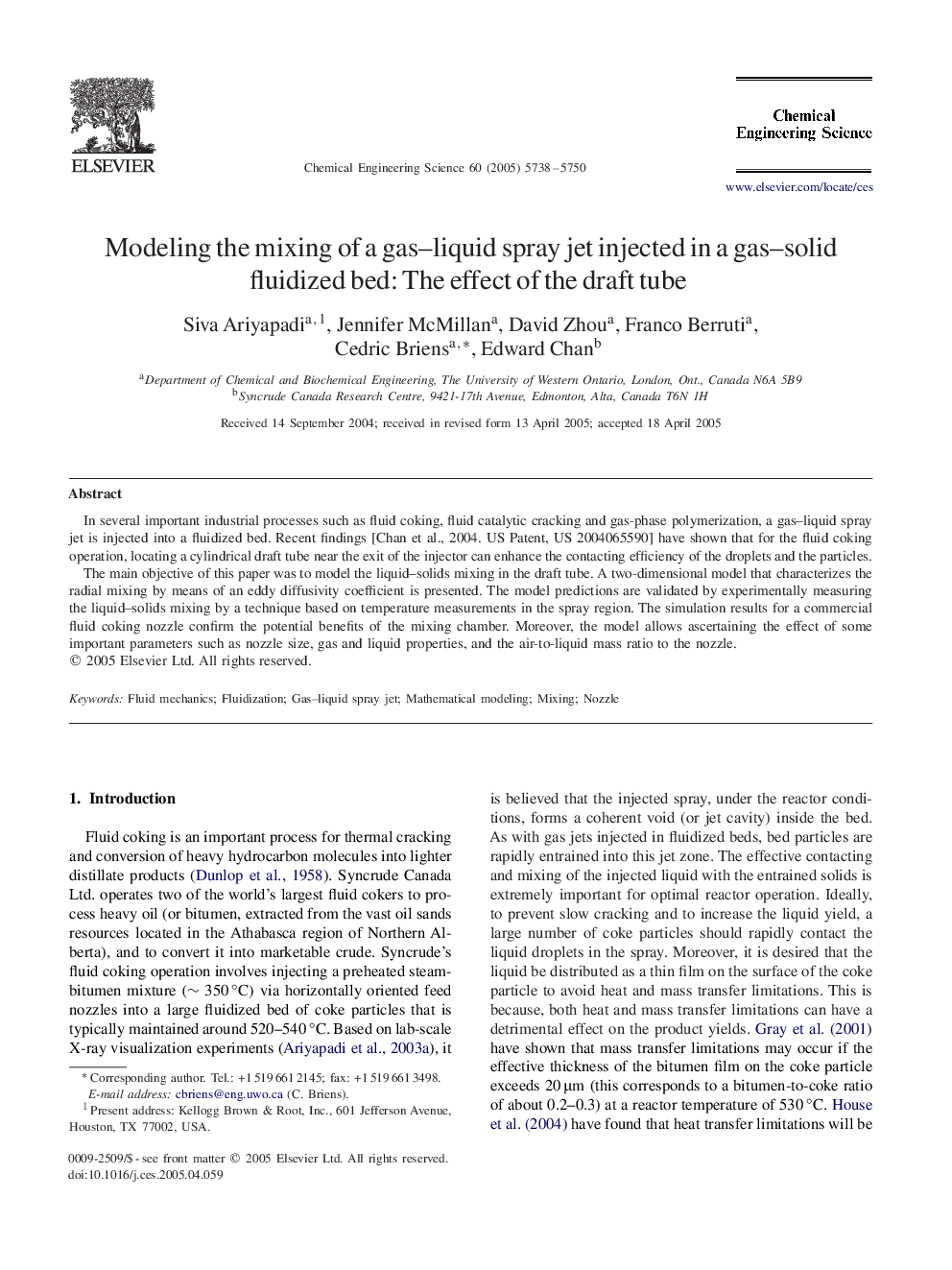| Article ID | Journal | Published Year | Pages | File Type |
|---|---|---|---|---|
| 159422 | Chemical Engineering Science | 2005 | 13 Pages |
In several important industrial processes such as fluid coking, fluid catalytic cracking and gas-phase polymerization, a gas–liquid spray jet is injected into a fluidized bed. Recent findings [Chan et al., 2004. US Patent, US 2004065590] have shown that for the fluid coking operation, locating a cylindrical draft tube near the exit of the injector can enhance the contacting efficiency of the droplets and the particles.The main objective of this paper was to model the liquid–solids mixing in the draft tube. A two-dimensional model that characterizes the radial mixing by means of an eddy diffusivity coefficient is presented. The model predictions are validated by experimentally measuring the liquid–solids mixing by a technique based on temperature measurements in the spray region. The simulation results for a commercial fluid coking nozzle confirm the potential benefits of the mixing chamber. Moreover, the model allows ascertaining the effect of some important parameters such as nozzle size, gas and liquid properties, and the air-to-liquid mass ratio to the nozzle.
